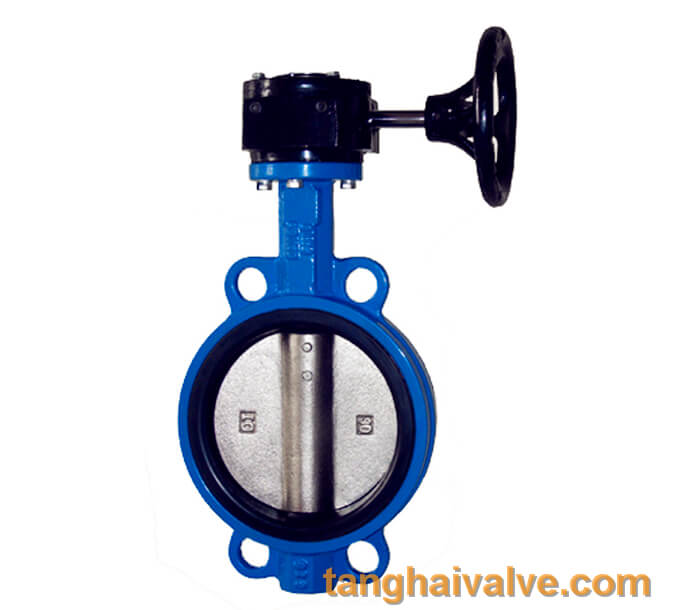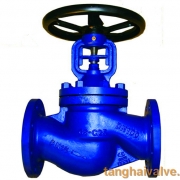Is a gasket needed for installation of the resilient seated wafer butterfly valve?
Before understanding the problem of adding gaskets to the soft-seal wafer butterfly valve, let’s take a look at the main working conditions of the soft-seal wafer butterfly valve. It can be applied to water supply and drainage, gas pipelines such as food, medicine, chemical industry, petroleum, electric power, textile papermaking, etc. It is used for regulating flow and intercepting medium. And has certain standards, as follows:

Wafer type butterfly valve with worm gear
Standards for soft-seal wafer butterfly valves:
Gauge manufacturing specification: GB/T 12238-2008
Construction length specification: GB/T 12221-2005
Connection flange specification: GB/T 9113
Pressure temperature rating: GB/T 12224-2005
Experimental inspection specification: GB/T 13927-2008
The soft-seal wafer butterfly valve is characterized by sensitive operation, labor-saving, and good sealing performance. So the reason for choosing the soft-seal wafer butterfly valve to a large extent is because of its good sealing performance. Then, in actual field application, we encountered a problem: Can the connecting surfaces on both sides of the soft-seal wafer butterfly valve function as a flange gasket? When installing the butterfly valve, is it necessary to add gaskets for sealing? With such a question, let’s first look at a live case.
A new batch of soft-seal wafer butterfly valves from a factory are used for acidic liquid pipelines. The soft-seal of the product is made very thick, and some of the soft-seal material is exposed to form a convex surface. May I ask if this kind of butterfly valve is installed? Also add gaskets for sealing? Through practice, we have seen that this situation can be added or not, but it is added for more insurance. Generally, new soft-sealed butterfly valves can be sealed without gaskets. If it is an old valve, it is necessary to consider the problem of aging. Soft-seal butterfly valves generally come with a gasket, which can not be installed, but it depends on the application of the soft-seal wafer butterfly valve. For example, in this case, if it is used in high temperature or corrosive liquid pipelines, in order to avoid personal injury, it is recommended to add high-pressure PTFE gaskets during flange connection, so that it can be safer and can be done once and for all. The purpose of adding gaskets is to protect the rubber-lined flange surface, because the replacement valve ring is more expensive than the replacement valve gasket. If the gasket is not added under bad working conditions, even if the flange does not leak, it is very likely that the valve will leak internally.
So in summary, whether the soft seal wafer butterfly valve needs to be gasketed depends on the chemical nature, temperature and pressure of the pipeline medium. Generally speaking, although the connecting surfaces on both sides of the soft seal wafer butterfly valve can play the role of flange gasket, it is recommended to add a gasket on both sides for safety. Because the butterfly valve will bump and bump a little during transportation and handling, it will produce an incomplete sealing surface, so it is recommended to add an extra gasket. Of course, there are other points of view that there is no need to add shims, and it is superfluous. Therefore, we can refer to a standard and then make a choice according to our specific working conditions, which can be based on the valve diameter, etc.: soft-seal wafer butterfly valves under 6 kg may not be added; 6-16 kg butterfly valves are recommended to add gaskets. Spacers below DN300 are 1.5mm; spacers above DN300 and below 1200 are 3.0mm. For more butterfly valve information, please contact Tanghai Valve’s online customer service.
TH Valve is a professional manufacturer of butterfly valve, gate valve, check valve, globe valve, knife gate valve, ball valve with API, JIS, DIN standard, used in Oil, Gas, Marine industry, Water supply and drainage, fire fighting, shipbuilding, water treatment and other systems, with Nominal Diameter of DN50 to DN1200, NBR/EPDM/VITON, Certificates & Approvals: DNV-GL, Lloyds, DNV, BV, API, ABS, CCS. Standards: EN 593, API609, API6D
Video of center-lined butterfly valve:
Related news/knowledge:
Characteristics of soft seal /resilient seated gate valves
Valve material and valve standards-(6)-gasket material
7 types of flange sealing surface: FF, RF, M, FM, T, G, RTJ
Fasteners, fillers and gasket materials of valves

 tanghaivalve.com
tanghaivalve.com

 © Copyright 2020 Tianjin Tanghaidongyang Valve Co., Ltd. All Rights Reserved.
© Copyright 2020 Tianjin Tanghaidongyang Valve Co., Ltd. All Rights Reserved.